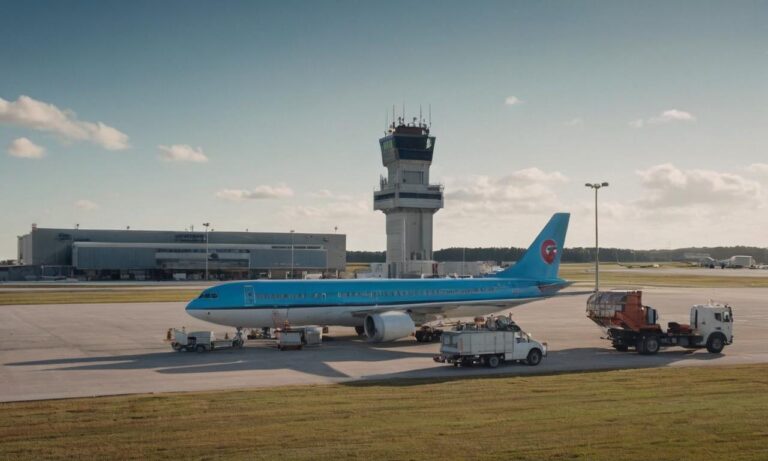In the intricate web of aviation regulations and airspace classifications, understanding the conditions under which an aircraft can operate from a satellite airport within Class C airspace is crucial for pilots and aviation enthusiasts alike. Class C airspace is known for its controlled environment, and satellite airports play a pivotal role in the broader aviation landscape.
Class C Airspace Overview
Class C airspace is designated around busy airports to facilitate a controlled and efficient flow of air traffic. Typically, it extends from the surface to a certain altitude and is further divided into two layers—an inner core and an outer ring. The inner core has tighter restrictions and requires communication with air traffic control (ATC) for entry.
Satellite Airports in Class C Airspace
Satellite airports, also known as secondary or reliever airports, are those located within the lateral boundaries of Class C airspace but are not the primary airport. These airports play a crucial role in offloading traffic from the primary airport, contributing to overall airspace efficiency.
Conditions for Aircraft Operation
For an aircraft to operate from a satellite airport within Class C airspace, certain conditions must be met. These conditions are in place to ensure the safety and orderliness of air traffic within the controlled airspace.
Communication with ATC
Prior communication with ATC is a fundamental requirement. Pilots must establish contact with the relevant ATC facility and adhere to their instructions. This includes obtaining clearance to enter the Class C airspace and receiving guidance on traffic separation.
Transponder Requirements
Equipping the aircraft with a functioning transponder is mandatory. The transponder helps ATC identify the aircraft’s position, altitude, and other crucial information, enhancing overall situational awareness within the airspace.
Compliance with ATC Instructions
Strict adherence to ATC instructions is non-negotiable. Pilots must follow the guidance provided by ATC to maintain a smooth flow of traffic and prevent potential conflicts within the airspace.
Collaborative Approach for Safety
The operation of aircraft from a satellite airport within Class C airspace underscores the collaborative nature of aviation. Pilots, ATC, and airport authorities work together to create a seamless and secure environment for air travel.
Understanding the conditions under which an aircraft may operate from a satellite airport within Class C airspace is essential for pilots navigating through these complex regulatory frameworks. By prioritizing communication, compliance, and collaboration, the aviation community ensures the safety and efficiency of operations within controlled airspace.
Frequently Asked Questions
As the regulations surrounding aircraft operations within Class C airspace and satellite airports can be intricate, here are some frequently asked questions to provide further clarity.
What defines Class C airspace?
Class C airspace is characterized by controlled zones around busy airports. It features two layers—an inner core and an outer ring. Pilots need to communicate with ATC for entry into the inner core, which has tighter restrictions.
How do satellite airports contribute to airspace efficiency?
Satellite airports, positioned within Class C airspace, serve as secondary facilities to relieve traffic from the primary airport. This strategic placement enhances overall airspace efficiency and contributes to smoother air traffic management.
Why is communication with ATC crucial for aircraft operating from satellite airports?
Communication with ATC is paramount to ensure safe and orderly air traffic. Pilots must establish contact, obtain clearance, and follow instructions, contributing to effective traffic separation and preventing potential conflicts.
What is the role of a transponder in aircraft operations within Class C airspace?
The transponder is mandatory equipment for aircraft operating in Class C airspace. It aids ATC in identifying the aircraft’s vital information, such as position and altitude, promoting situational awareness and overall airspace safety.
How can a collaborative approach enhance safety in Class C airspace?
The collaborative efforts of pilots, ATC, and airport authorities create a secure and efficient environment. This teamwork ensures effective communication, compliance with regulations, and proactive measures to address potential challenges within the airspace.
Operational Considerations
Aside from communication and compliance, pilots operating from satellite airports within Class C airspace need to consider various operational aspects. These include weather conditions, airport-specific procedures, and coordination with ground services to facilitate a smooth and timely departure or arrival.
| Operational Aspect | Considerations |
|---|---|
| Weather Conditions | Pilots should be aware of current and forecasted weather conditions, considering factors like visibility, wind speed, and precipitation that may impact the flight. |
| Airport-Specific Procedures | Familiarity with specific procedures at the satellite airport, such as taxi routes, departure and arrival protocols, and any unique considerations, is essential for a smooth operation. |
| Coordination with Ground Services | Efficient coordination with ground services, including fueling, baggage handling, and maintenance, is crucial for on-time departures and arrivals at satellite airports. |
Conclusion
Mastering the conditions and considerations for aircraft operations from satellite airports within Class C airspace requires a comprehensive understanding of communication, compliance, and operational nuances. By delving into these details, pilots contribute to the safety and efficiency of air travel in controlled airspace.






